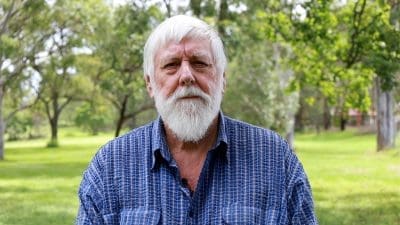Having enjoyed a long career in pasture and livestock research, I have heard on countless occasions producers call for scientists to get out of their “ivory towers” to understand the real-world challenges they face on their properties.
 It’s a fair complaint and one that my colleagues in the research sector have tried hard to improve on – the more scientists listen and understand the challenges facing producers, the more likely solutions will be practical and adopted.
It’s a fair complaint and one that my colleagues in the research sector have tried hard to improve on – the more scientists listen and understand the challenges facing producers, the more likely solutions will be practical and adopted.
This challenge has been at the very core of the North Australia Beef Research Council’s existence since it was created 30 years ago.
The purpose of NABRC, and its 11 regional beef research committees (RBRCs) spread across Queensland, the Northern Territory and the top of Western Australia, is to act as a conduit connecting producers, researchers and funding agencies, with a view to ensuring RDE&A investments are targeting the most important challenges facing the industry and delivering practical and high-impact solutions.
One of the surprising outcomes of this process is that not only do researchers obtain a much greater understanding of producer needs, the producers involved also come to realise the challenging environment the research sector operates in – the level of detailed data required to inform new practices, the difficulties collecting this information in remote and extensive environments, the constant challenge of obtaining funding, and dealing with the endless layers of bureaucratic red tape.
Only through this mutual understanding can effective and impactful RDE&A projects be designed.
The NABRC process starts at the grassroots, with the RBRCs bringing together researchers, universities, and state and federal government agencies, to listen to producers about the challenges to production in their local patch.
The producer representatives on these committees gather these insights not just based on their own experiences, but by connecting with their peers to gather information about what’s happening on the ground right across their region.
The more people involved in these discussions that shape the future of our industry the better – at NABRC’s most recent council meeting, a new communications and engagement plan was signed off which will open new pathways for producers, researchers and industry representatives to connect with their local RBRC and contribute to the discussion about where RDE&A is most needed.
This includes a new website, new social media channels, and more face-to-face activities in rural communities.
The issues raised by producers are brought to the NABRC table where representatives from each region come together to discuss the impact of these challenges, and prioritise which need to be addressed as short, medium and long-term priorities.
Hot topics that were brought to the table this year included the need for independent carbon trading advisory services and new extension programs to drive improved grazing management practices that enhance the feedbase available to northern herds.
The NABRC process was the model used by Meat & Livestock Australia (MLA) when establishing the Southern Australia Meat Research Council (SALRC) and Western Australia Livestock Research Council (WALRC), and together the three bodies set the priorities for MLA’s research programs.
The priorities identified also influence the investments made by state government, university and private sector research bodies. The model was adopted because it has been proven to work, delivering large-scale and game-changing research programs like Cash Cow, the use of phosphorous supplementation, and the ongoing battle against pasture dieback.
Projects like these have impact because they have been subject to a comprehensive and rigorous process, which results in RDE&A plans that are highly focussed to ensure maximum impact on productivity and profitability. The key to this success is breaking down the barriers between producers and researchers through conversation and collaboration.
I encourage all producers, advisers, researchers, and industry bodies to be part of that process and have their say by reaching out to their local RBRC, attending a BeefUp Forum, or simply posting a comment on NABRC’s Facebook page.



HAVE YOUR SAY